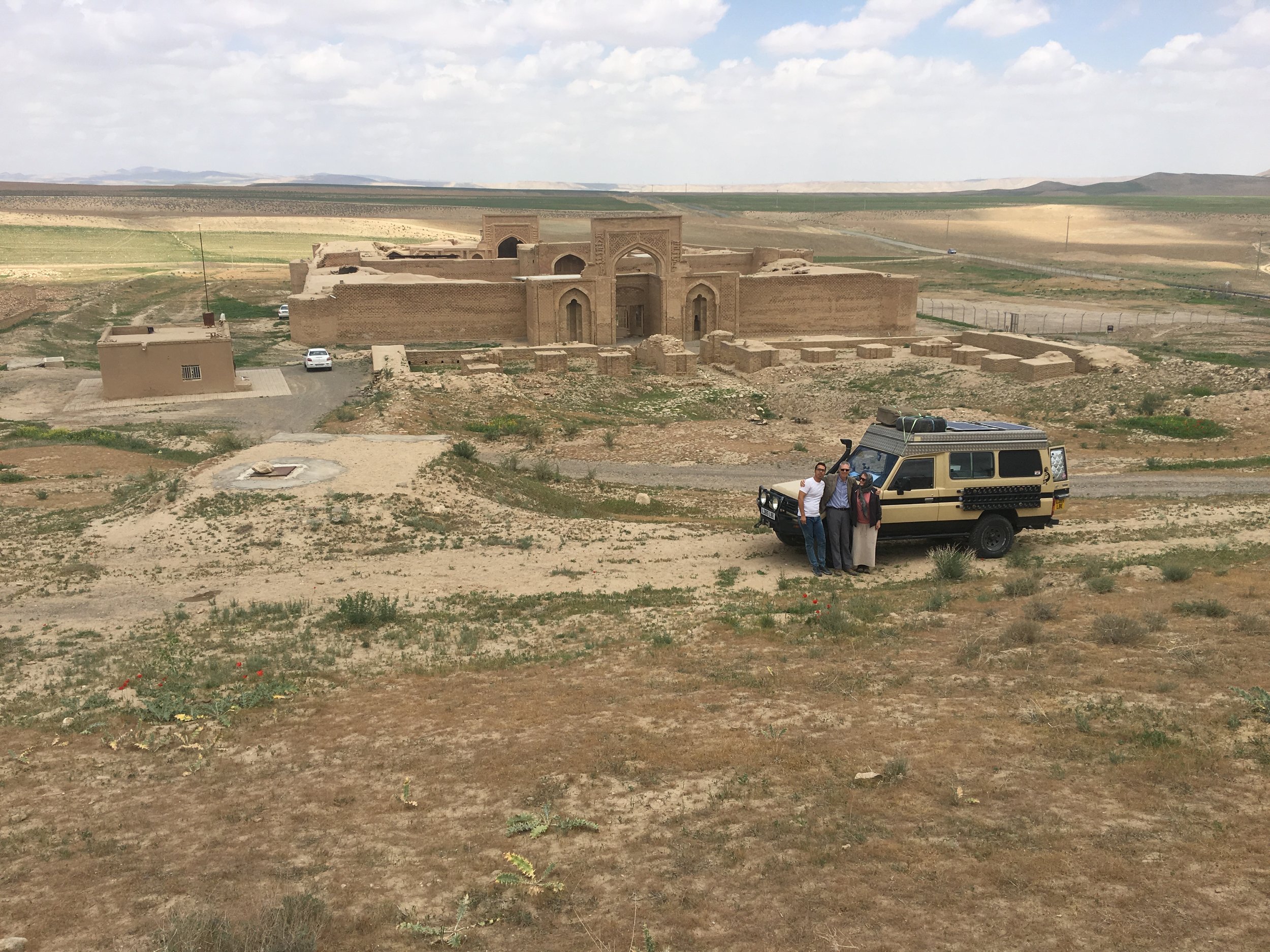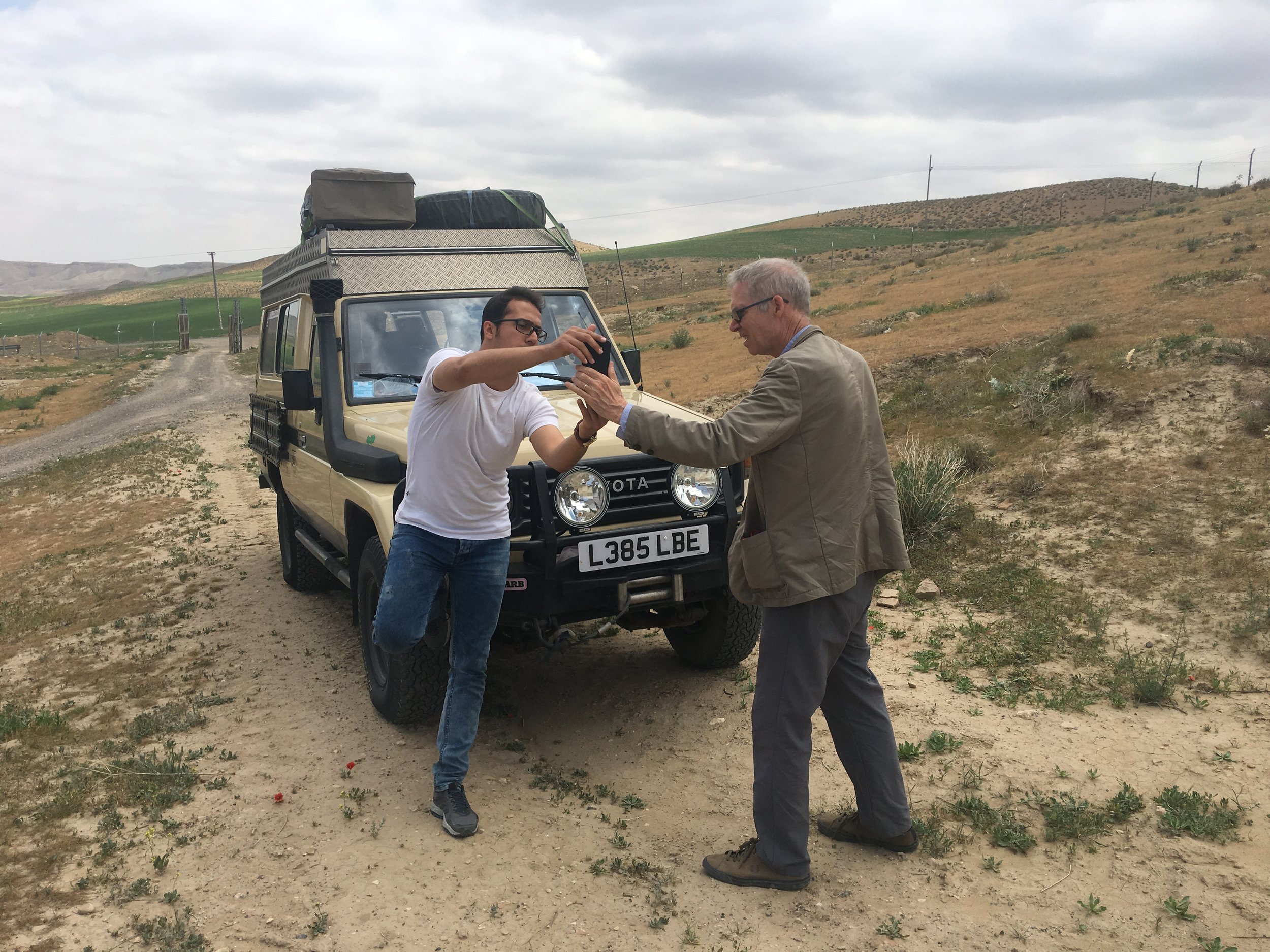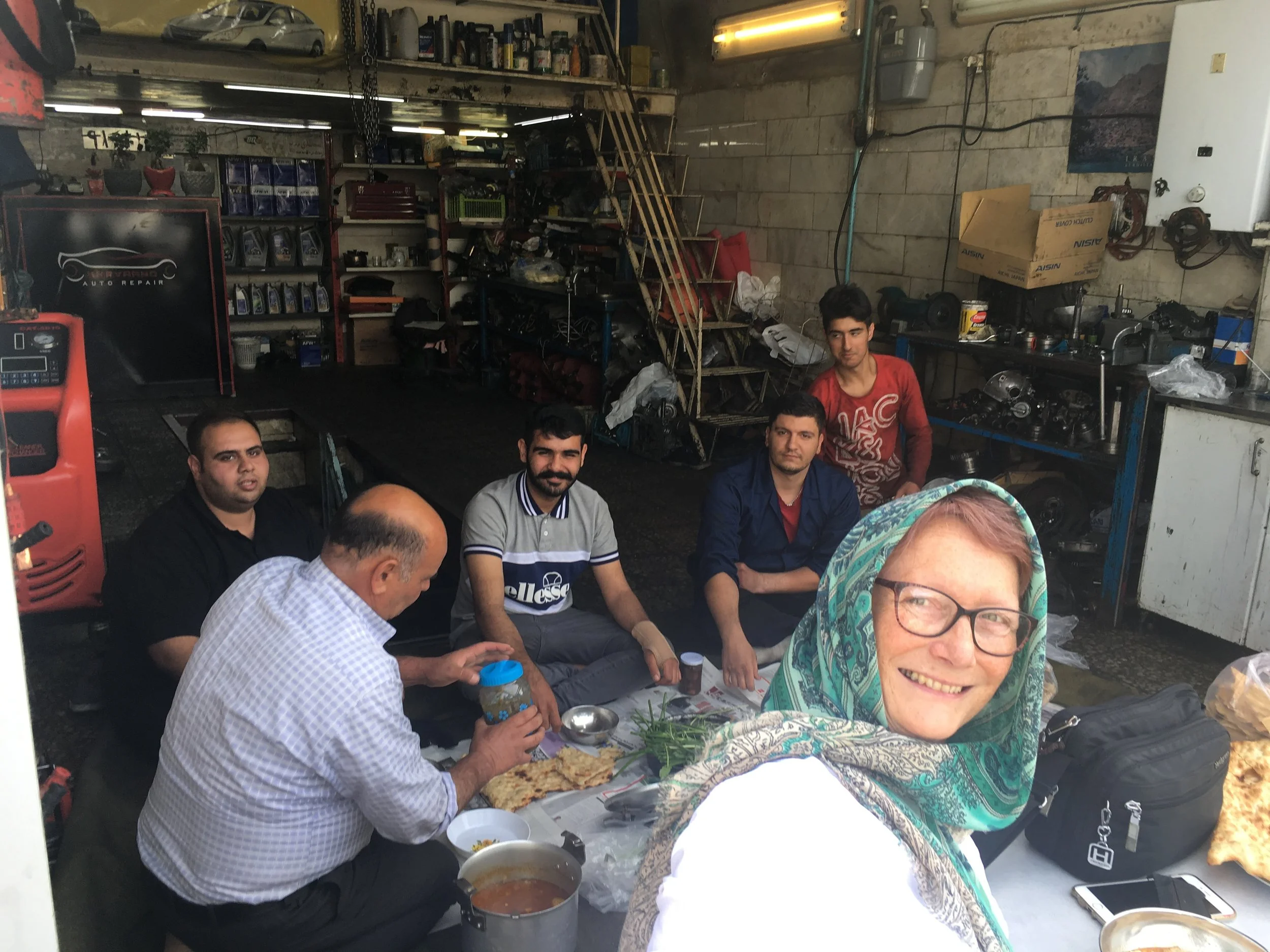Iran 9 - The Last Post
We left Iran on Wednesday 25th April 2018 and just before arriving at the border we pursuaded our guide that there was time to squeeze in a 12th Century Caravanserai, situated some 20 km off our route up a desert track located in Razavi Khorasan Province, Iran, between Merv and Nishapur.
It was postulated that we would be able to see the former Silk Road Route between Mashad and Sahraks, the Iranian border with Turkmenistan.
As with many desert buildings made of mud and with few outward facing windows, it looked like nothing special from afar. As we got closer, the mud brown walls grew out of the sand and it appeared before us in all its fortified glory nestled in among the sandy hills, covered in patchy desert grass and outbreaks of poppies.
When we arrived, although quite a renowned site, the place was heavily fenced up and appeared closed to the public. But through the tall wire mesh we could see we had found a jewel.
On the advice of a passing shepherd, we pressed on the horn and before long a custodian with keys arrived to let us in and he held a booklet of official government entrance vouchers.
Ali took us around and herbal tea was offered before we left.
Rabat-I-Sharaf had been built in the 12th Century and was in remarkably good condition. It is probably the largest and most beautifully decorated caravanserai in Iran. Some money had been spent on restoration in the hope of a future Unesco listing but many original features were preserved.
Out of the enclosure, if you scanned the horizon either Eastwards towards Turkmenistan or back through the mountains into Iran, you could see clearly defined tracks that must still be used by herders today and which for centuries must have carried traders both East and West.
The Caravanserai was, in its day, just one of many resting places where horses, donkeys and camels could be fed or changed and travellers could rest on their journey. This particular building is striking today with its amazing carvings, it’s beautiful Islamic Sufi script writing and patterns in the brickwork. This is before you even start on the setting and context.
With the Chinese keen to promote trade along the former Silk Road route and the development of ‘the belt’ it is hard to believe that when my own young grandchildren, Aliya and Kristjan visit in their dotage, that there will not be many more visitors and admirers here. We signed the visitor’s book noting that the last visitors from the UK had passed by a year ago almost to the day.
It was fitting that our real goodbyes to Iran and to our guide Reza were done over a cup of herbal tea with Ali the custodian in the warm sun overlooking this really majestic building constructed for weary travellers, rather than among the many trucks and officials in the border compound.










